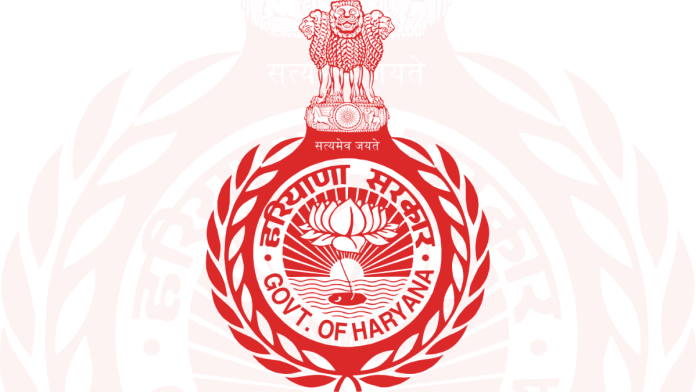Thank you dear subscribers, we are overwhelmed with your response.
Your Turn is a unique section from ThePrint featuring points of view from its subscribers. If you are a subscriber, have a point of view, please send it to us. If not, do subscribe here: https://theprint.in/
In 2024, Haryana’s 15th Legislative Assembly election results astounded everyone. In this election, Scheduled Caste (SC) voters were very important for all political parties. As always, reservation has been an important issue for Dalits since independence. August 1, 2024, marked a historic day in the contemporary discourse on reservation, as the Supreme Court’s Constitution Bench ruled to allow states to sub-classify SCs and Scheduled Tribes (STs) to ensure that quota benefits reach more backward castes within these groups. This judgement overruled the 2004 judgment in E.V. Chinnaiah vs. State of Andhra Pradesh, which had held that SCs constitute a homogeneous group and cannot be sub-categorized. Justice Bela M. Trivedi was the lone dissenter, asserting that SCs constitute a homogeneous class and “cannot be tinkered with by the States” (Indian Express, August 2, 2024).
This decision sparked another discourse among Dalits, as some appreciated it while others criticized it. Because the Indian caste system is very complex, it creates a grading system within society. In the context of Haryana, there has been a bipolarization of SCs between the Other Scheduled Castes (OSC) and the Deprived Scheduled Castes (DSC). However, OSC and DSC had already been bipolarized since the Haryana government implemented separate reservations in education for these two categories. After gaining separate reservation in education, DSCs began demanding the same in government jobs.
That is why, just before the election, Chief Minister Nayab Singh Saini announced that the state cabinet had approved the Haryana Scheduled Caste Commission Report on August 17, 2024. Saini added that a 20 percent quota in government jobs would be reserved for SCs in the state, with the commission recommending that 10 percent of this quota be allocated to the Deprived Scheduled Castes (ANI Report). This announcement attracted DSCs toward the BJP, this was a masterstroke by the BJP.According to the Family ID data, the DSC population is 33,74,264, while the OSC population is 30,64,684. In this election, the political party vote percentages were: BJP – 39.94%, INC – 39.09%, INLD – 4.14%, BSP – 1.82%, and AAP – 1.79% (Election Commission of India). When we look at the vote percentages of BJP and INC, there was a difference of only 0.85 percent, but this small margin changed the entire picture of the election. The BJP won 48 seats, Congress won 37, and even INLD won only two seats.
As, during Haryana’s election, the apex court reaffirmed its decision allowing sub-classification reservations within the quota. The court rejected more than two dozen review petitions filed against its decision and stated that there was no flaw in the judgment that required reconsideration. This motivated DSCs again toward the BJP, and they believed that only the BJP could implement separate reservations in jobs. The DSC gave its support to the BJP on September 22, 2024. They organized a mega conference in Jind where a huge crowd took an oath to support the BJP. Later, on October 3, 2024, DSC organized another mega conference in Ladwa, a hot seat where the former CM of Haryana was contesting. Here also, the DSC gave its support to the BJP. These two huge conferences were remarkable in mobilizing the DSC in support of the BJP.
Another aspect was that BJP carefully distributed its tickets on the 17 reserved assembly seats between SCs and DSCs. However, in the 2024 Lok Sabha general election, both major alliances—the National Democratic Alliance (NDA) led by the BJP and the Indian National Developmental Inclusive Alliance (INDIA) led by the INC—ignored DSC candidates for MP positions on the reserved seats in Haryana. Two seats—Ambala and Sirsa—are reserved for SCs. Both alliances nominated candidates from the dominant SC caste (Chamar): BJP’s Banto Kataria and Congress’s Varun Chaudhary from Ambala; BJP’s Dr. Ashok Tanwar and Congress’s Kumari Selja from Sirsa. Due to the exclusion of DSCs, the BJP lost five seats in the 2024 Lok Sabha elections.
The bipolarization of SCs between OSC and DSC played a significant role in this election. Sub-classification of SC reservation was a key issue that deepened this division. In this election, two major Dalit political parties—the BSP and ASP—formed alliances with the INLD and JJP, respectively. However, both party leaders, Mayawati and Chandra Shekhar Azad, belong to the Chamar caste, which is dominant within the OSC in Haryana. Additionally, both Mayawati and Chandra Shekhar Azad made statements against the Supreme Court’s ruling on August 1, 2024.
Therefore, all 17 reserved SC assembly seats in the state elected either Congress or BJP candidates, showing the bipolar nature of SC voters. They ignored regional parties as well as Dalit-centric parties like BSP and ASP. Of these 17 seats, BJP candidates won 8 seats—Bawani Khera, Pataudi, Kharkhoda, Narwana, Neelokheri, Bawal, Israna, and Hodal. Congress won 9 seats—Mullana, Kalanaur, Sadhaura, Shahabad, Kalanwali, Ratia, Uklana, Jhajjar, and Kalanaur. This demonstrates the polarization of SCs between OSC and DSC in this election, centred around the issue of sub-classification of SC reservation.
Author
Dr. Krishan Kumar
Political Sociologist and expert on caste issues in Haryana, Assistant Professor of Political
Science, Lovely Professional University, Punjab.
EI- krisjhankumar1794@gmail.com
These pieces are being published as they have been received – they have not been edited/fact-checked by ThePrint.


